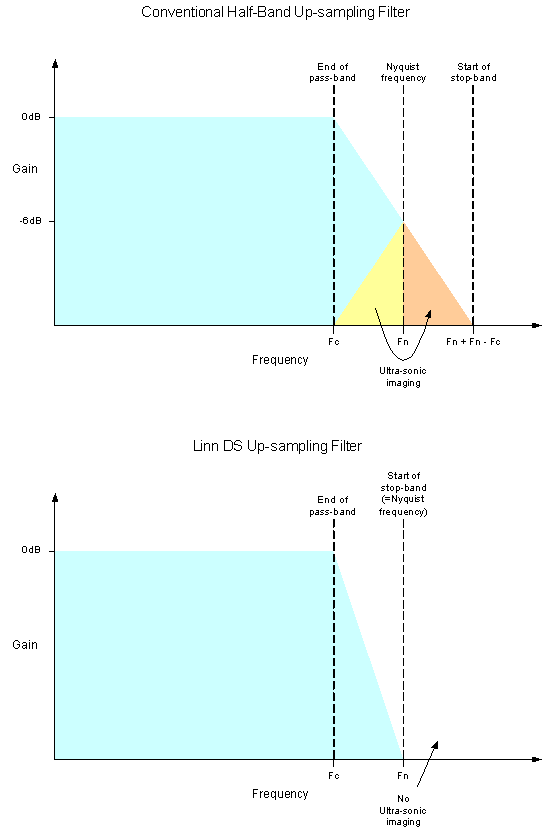Up-sampling
All Linn DS products share the same custom-designed up-sampling engine, implemented in a Xilinx Virtex-4 FPGA. The up-sampler takes digital audio at any of the supported sample rates and up-samples it to a constant rate. Linn products with the Wolfson DAC this is 352.8kHz or 384kHz, and for the Katalyst DAC this is 705.6kHz or 768kHz. This allows the up-sampling filters in the third party DAC to be bypassed, thus removing a potential source of noise and signal distortion.
The filter shapes used in the Linn DS up-sampler are the result of extensive listening tests. Various filter shapes were tried including linear-phase, minimum-phase, apodizing, etc. The resulting filter has a linear-phase characteristic and is what Linn term a ‘true’ upsampling filter. This means that it is fully attenuating at the Nyquist frequency and so prevents the formation of ultrasonic-images
Most up-sampler designs use ‘half-band’ filters because they are computationally more efficient than other filter types. The disadvantage of the half-band filter in an upsampling application is that it only attenuates by -6dB at the Nyquist frequency. This results in the upper portion of the audio band being ‘reflected’ around the Nyquist frequency.
Implementing a ‘true’ upsampling filter requires significant processing power if parameters such as pass-band width, pass-band ripple, and stop-band attenuation are not to be compromised. Implementing the design in an FPGA allows complete control of the digital signal path and allows high-performance filters to be implemented with high mathematical precision.
